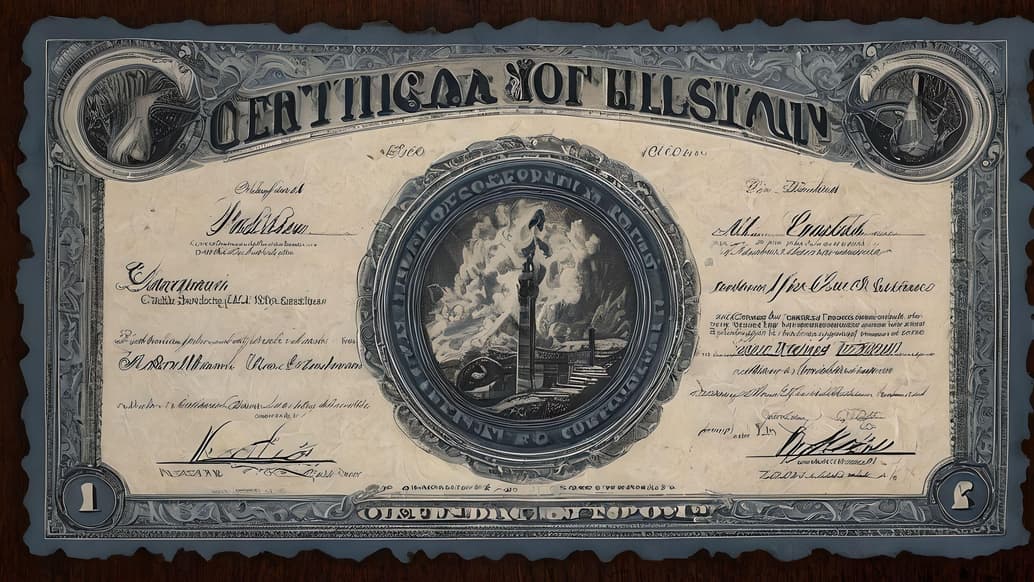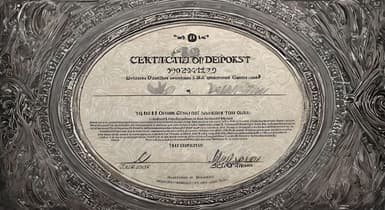What Is the Minimum Balance for a Certificate of Deposit (CD)?

When people have some extra funds, they want to make their money work for them. They consider different options for multiplying cash and naturally pinpoint those that offer the highest earnings. Certificates of deposit (CDs) pop up as an alluring way to turn a dollar on higher interest rates, with APYs hitting 5% and more.
To offset those higher rates, though, most financial institutions make your funds inaccessible until the deposit matures and set up requirements for a certificate of deposit minimum balance. It’s the minimum CD amount you need to have on your account to use the CD benefits.
Why does it matter? Knowing the typical minimum balance for a certificate of deposit can help you plan ahead. While a higher account balance can bring more attractive interest rates, it might not be feasible for everyone. It’s crucial to find that sweet spot where your money can grow without causing financial stress. We are here to break it down for you and help you navigate the realm of CDs like a pro.
What Is a Minimum Balance for a CD?
More often than not, different banks and credit unions march to the beat of their own drums, and the minimum balance for a certificate of deposit could widely vary across financial institutions. While some banks seek to win more clients by offering pretty accessible entry points starting at $500, others require a beefier CD minimum deposit of $5000 and more to get you on board.
A typical entry balance for a 1-year certificate of deposit ranges between $500 and $1000. Check the table below to have an idea of how the minimum amount for a CD and annual APYs vary across the biggest American banks you can set your eyes on.
Bank Name | Minimum Deposit | APY |
|---|---|---|
JPMorgan Chase | $1.000 | 3-5% (depending on term) |
Bank of America | $1.000 | 0.05% — 5% (depending on term and balance) |
Wells Fargo | $2.500 | 4.40% |
Citibank | $500 | 0.05% — 5.25% (depending on term and balance) |
U.S. Bank | $1.000 | 4.20% — 4.80% (depending on term) |
PNC Bank | $1.000 | 0.01% |
Goldman Sachs | $500 | 4.35% — 5.50% (depending on term) |
As you can see, CD minimum balance requirements and APYs might greatly vary across financial institutions. There are a number of factors that can sway these requirements:
- Institution Type: Big banks might ask for higher minimum balances due to their broader range of services and overhead costs. Meanwhile, credit unions or online banks distinguished by streamlined operations often offer lower minimums.
- CD Term Length: Shorter-term CDs might have lower minimum deposit requirements for CD accounts than longer-term CDs. In other words, the longer you commit, the more the bank might ask you to put on the table.
- Interest Rates: Financial institutions might use minimum balances to entice you with better interest rates and make you want to deposit more. The higher the balance, the juicier the rate. For example, Jumbo CDs set the entrance bar as high as $100.000 while rewarding you with APYs far above 5%.
- Account Type and Special Offers: Special promotions or specific account types within a bank can also influence the typical minimum balance for a CD. Some accounts might require less if you have other accounts in the same institution.
Selecting a Perfect CD for Your Needs

If a certificate of deposit speaks to you when it comes to investing your hard-earned savings profitably, you might feel confused by the choice the financial market will throw at you. Not to get lost in a myriad of options available, here are a few strategies to help you pick the best CD:
- Assess Your Goals and Timeline: Thoroughly review your financial blueprint. Are you saving up for a short-term goal, like a vacation, or aiming for a long-term investment? Shorter-term CDs typically have lower rates but might better match your immediate plans. Longer-term CDs often offer better rates while locking in your money for an extended period, which might be inconvenient for you. The same is true for a CD minimum balance. You might want to start with a lower amount and be able to add on money during the CD term, which is possible with Add-on CDs.
- Evaluate Risk Tolerance: CDs are generally low-risk, with most banks and credit unions providing insurance up to $250,000 ensured by FDIC or NCUA. Yet, there are still nuances to consider. Traditional fixed-rate CDs offer a steady, predictable return. Yet, they don’t account for inflation and rate fluctuations. If you seek more flexibility, consider bump-up or step-up CDs, allowing for an increase in interest rates during the deposit term to protect you from potential rate rises.
- Shop Around for Rates and Terms: Don't settle for the first CD that catches your eye. Different banks offer various rates and terms. So, take your time to do research and compare conditions provided by various institutions. Many of them can also have special offers on the list that might fit you at the moment and sweeten the deal.
- Compare CD Types: The CD family isn't one-size-fits-all. There are different CD types available, each meant to serve a separate purpose and fit a different financial situation. Check the types offered by your bank and compare those with options provided by other institutions to find the options that suit you to a tee.
CD Types

Traditional CDs provide a steady rate throughout the term, ensuring stability and peace of mind. Bump-up CDs offer resilience with rate adjustments, enabling you to increase the interest rate up to the market level up to two times during the CD term. No-penalty or liquid CDs allow early for early withdrawals without penalties under specific conditions, but they often come with lower rates. High-yield CDs might get you hooked with higher return opportunities. However, be ready to invest quite a hefty amount of money from the start and lock it in for a longer period of time.
How much money should you keep in a CD?
You should know the minimum deposit requirements, but it is equally important to decide how much money you are willing to keep in CDs. To make sure that having a CD will bring you only benefits and you won’t experience financial strain because of it, consider the following:
- Make sure you have enough money for a minimum deposit. As discussed previously, some CDs require quite significant minimum deposits to open an account. If you cannot make this deposit comfortably without negatively affecting your budget, you may want to find a CD that doesn’t require you to make a minimum contribution.
- Don’t forget about emergency savings. The next thing to consider is whether you have enough emergency savings before opening a CD account. If you don’t have any savings and you put a significant sum of money towards your CD, you won’t be able to access it in case you need it immediately. It is a good idea to have an additional savings account for emergencies and then add a CD to your arsenal when the first one is covered.
- Keep some liquid cash. If you withdraw money from a CD, you will have to pay a penalty, which can significantly affect the sum you receive in return. To avoid this, you should ensure you have enough liquid cash in other accounts to cover your basic needs.
- Carefully consider how much you want to earn and time frames. The first step is to figure out exactly what you are saving your money for. Once you have the answer, you need to know when you need to have this money on hand. You can then compare different interest rates and choose a suitable option for your goal. In the process, you may find out that you need to have more money in your CD than you think, so knowing your exact goals is crucial.
The bottom line is that even if you can theoretically put all your savings into a CD, this is not the best strategy because of the withdrawal limitations and penalties. It would help if you had other savings in addition to a CD to make it an advantageous option in the long run.
Final Thought
All in all, financial institutions do their best to provide CD options to attract and retain customers with varying financial needs, establishing different minimum certificate of deposit balance requirements, and tailoring enticing rates and special conditions. The true value in selecting a CD lies in understanding your financial landscape — assessing not just the minimum deposit required but how this investment fits into your broader financial strategy. It’s about finding a balance that allows your funds to flourish without compromising your financial well-being or limiting your liquidity. As we delve deeper into the intricacies of CDs, remember that the goal is not just to save but to save wisely, ensuring your financial decisions pave the way for a prosperous future.
FAQ
Why is the minimum balance for a CD important?
A CD minimum deposit is a prerequisite set up by the bank for a customer to gain access to the CD’s benefits. It’s a crucial factor for you to know to maximize your returns by making well-informed decisions and optimizing your financial strategies.
How does the minimum balance affect the CD interest rate?
Financial institutions use the minimum balance for CD requirements to incentivize customers. Normally, higher balances bring better rates and stimulate clients to deposit more money.
How does the minimum balance affect CD fees and penalties?
Many banks apply a minimum balance to avoid maintenance fees on your CD account, as well as to avoid penalties for early withdrawal.
Can I have multiple CDs?
Yes. While a specific financial institution can limit the number of CDs you can have, there are no restrictions overall. This means that if you want to open several CD accounts, you can do this through other credit unions or banks.




